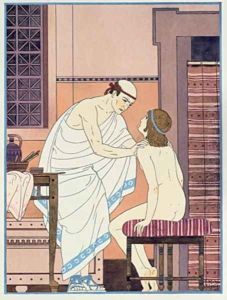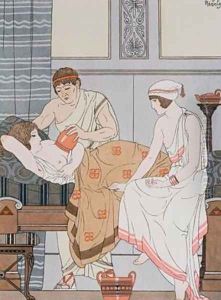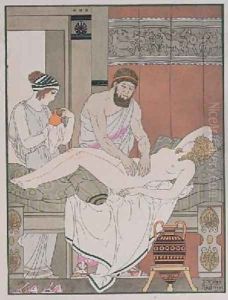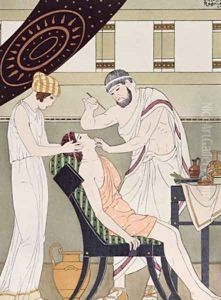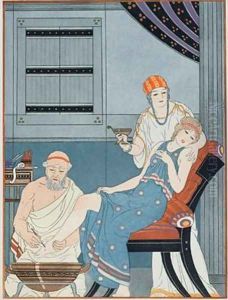J. Kuhn-Regnier Paintings
J. Kuhn-Regnier, born Johann Kuhn in 1873 in Cologne, Germany, was a notable illustrator and graphic artist whose work gained prominence in the late 19th and early 20th centuries. Though not as widely recognized today as some of his contemporaries, Kuhn-Regnier made significant contributions to the world of book illustration, poster design, and graphic arts during his lifetime. His style was characterized by a blend of Art Nouveau elements with the emerging modernist tendencies of the time, creating elegant and often whimsical designs that captured the imagination of his audience.
Kuhn-Regnier's career began in earnest at the turn of the century, a period marked by rapid industrial growth and significant changes in the visual arts. He was part of the generation of artists who transitioned from the detailed, ornamental qualities of Art Nouveau to the more streamlined and abstract forms of Art Deco and modernism. Throughout his career, Kuhn-Regnier contributed illustrations to numerous books, magazines, and advertising campaigns, showcasing a versatile ability to adapt his style to various mediums and subjects.
One of the defining characteristics of Kuhn-Regnier's work was his adept use of color and line to create vibrant images that were both appealing and effective in communication. His illustrations often featured scenes of everyday life, fantasy, and mythology, rendered with a sense of humor and a keen eye for detail. This made his work particularly popular in the realm of children's book illustration, where his ability to bring stories to life through imagery was highly valued.
Despite his success, Kuhn-Regnier's life and career were overshadowed by the tumultuous events of the early 20th century, including the First World War and the rise of the Nazi regime in Germany. These events had a profound impact on the artistic community in Europe, leading to significant disruptions and challenges for many artists of the time. Kuhn-Regnier continued to work through these difficulties, but like many of his peers, he faced increasing isolation and limited opportunities for public engagement with his art.
J. Kuhn-Regnier passed away in 1940, leaving behind a body of work that, while perhaps not as widely known as that of some of his contemporaries, continues to be appreciated by collectors and historians of early 20th-century art. His contributions to the fields of illustration and graphic design are recognized as part of the broader narrative of artistic evolution during a period of significant social and cultural change.
